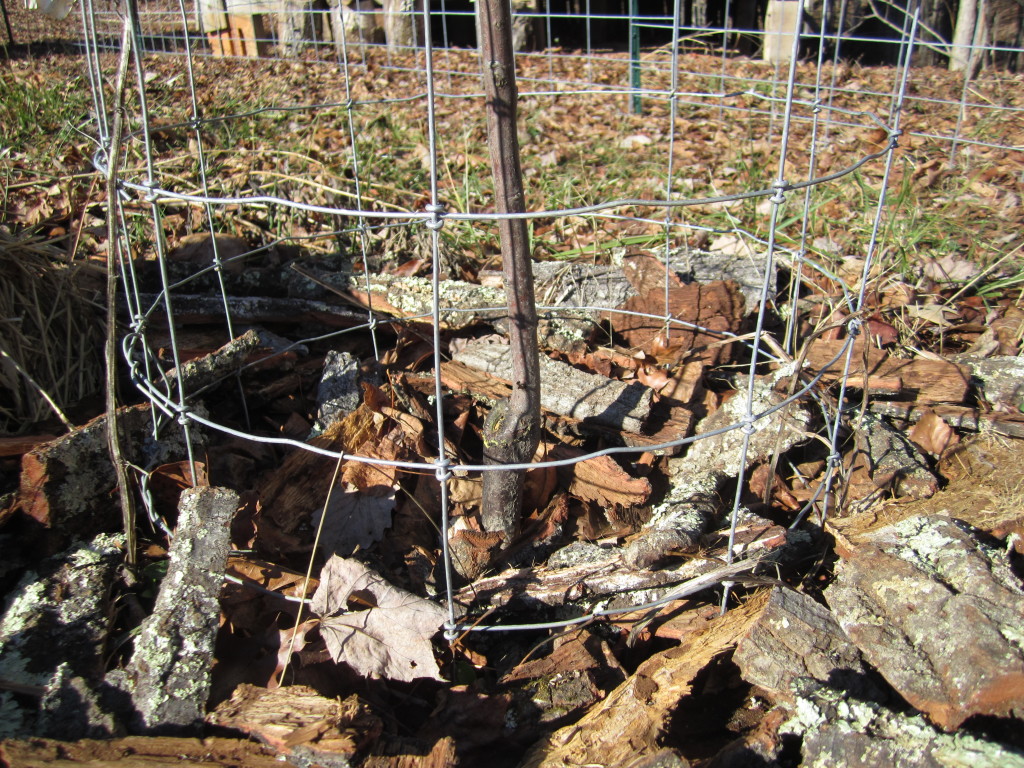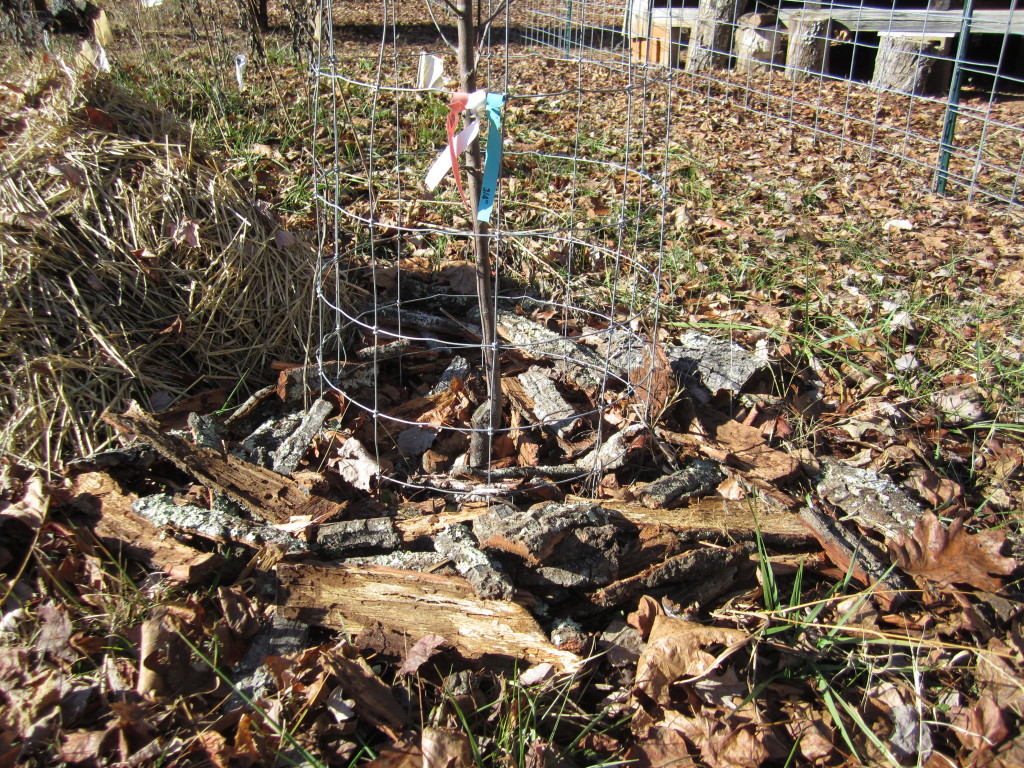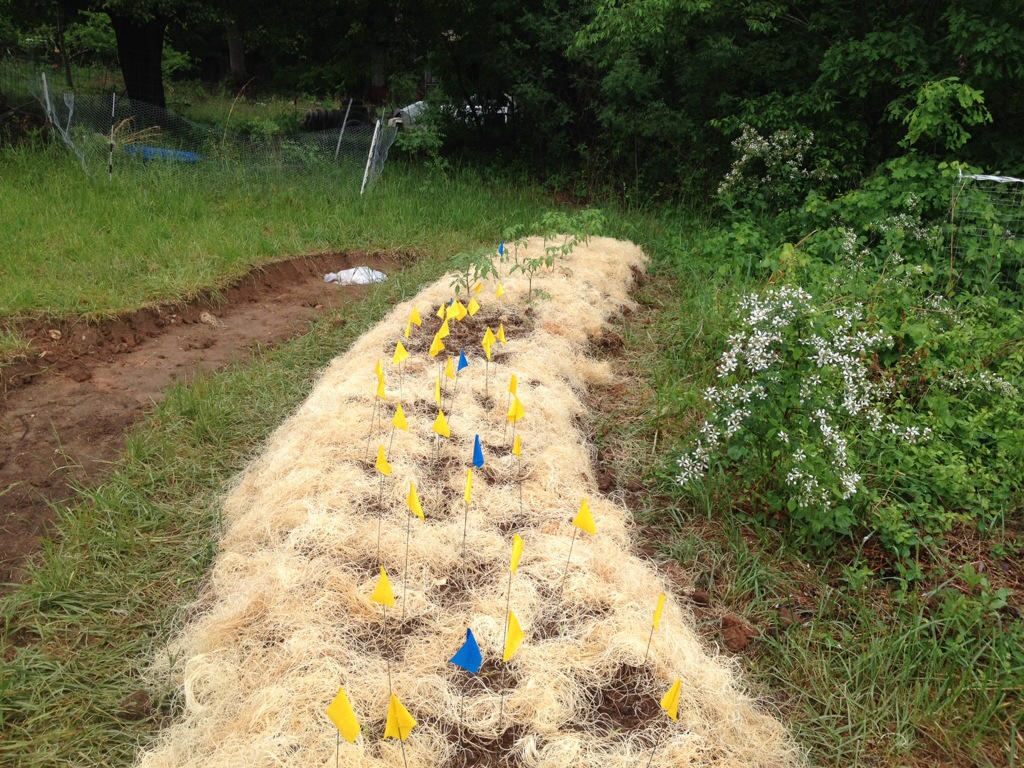What do you do with all of that bark, wood chips, and woody debri that accumulate when you split wood? While all of this material could be burned in you fireplace or woodstove, I find that after I sort out the smaller pieces of wood for kindling, I’m left with chunks and larger pieces of bark. For me, this bark doesn’t burn as well as dried wood. I think it holds more moisture, is less dense, and isn’t great kindling.
So I prefer to use it as mulch. Now these pieces of bark are pretty big, anywhere from 2 – 12 inches long, so I don’t put them on our vegetable gardens. Instead, I dump these larger pieces of leftover bark in our backyard food forest at the base of fruit trees. Here they can break down slowly and won’t get in the way of any planting or harvesting.
This also mimics a forest environment where dead and dying trees litter the forest floor and aid in the nutrient cycle feeding all sorts of microorganisms in the soil. Right now, in the middle of winter, most of the leaves have fallen off of the trees, and by adding a fresh layer of mulch over top of them, we create the perfect environment for decomposition and lock all of the new fertility in place with a protective layer of bark.


